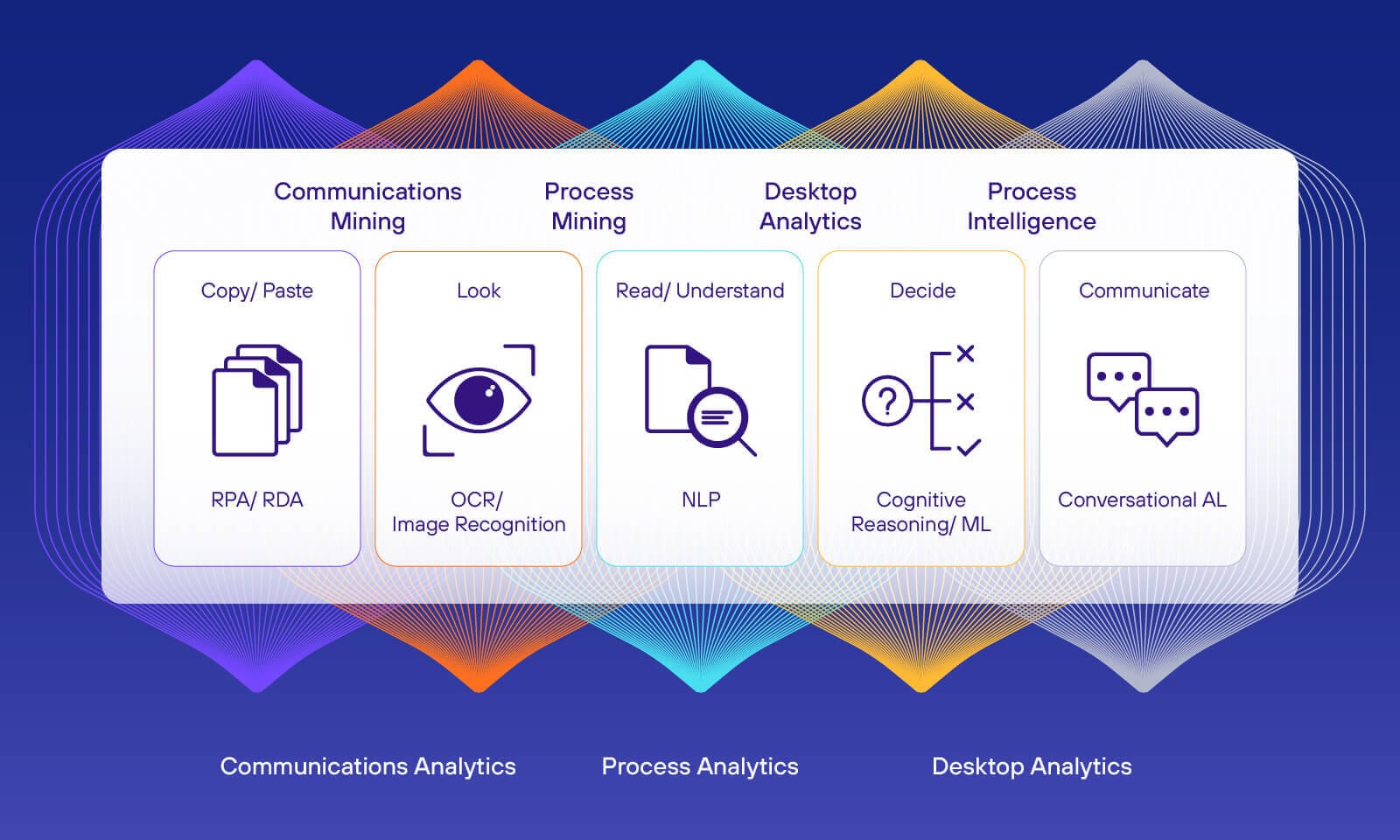Process Mining has achieved much for operational efficiency in recent years. Yet Communications Mining now opens up entirely new avenues for business transformation. While Process Mining drives important efficiency gains, Communications Mining is key to capturing the voice of the customer, both internal and external. Alongside technologies for automation, both solutions are needed to achieve a better, more competitive business.
The emergence of Process Mining has been a turning point for operational efficiency in the enterprise. Analysing event logs and data, Process Mining lets Operations teams sidestep the time-consuming task of process mapping. Instead, they automatically see where inefficiency exists in the business.
Yet Process Mining only tells one part of the story. It shows you ‘how’ a process happened and where it could have broken down. But it doesn’t explain ‘why’. Similarly, a system of record like a CRM or ERP system will report ‘what’ has happened, but it won’t help a business get closer to understanding the intentions or demand that triggered the process in the first place.
Businesses tend to have the tools they need to explain the ‘what’ and ‘how’ of their operations. But they so often lack the means to recognise ‘why’ - and you can’t build a successful process until you understand the demand that drives it. To understand that demand, it’s crucial you make sense of your organisation’s unstructured conversational data.
Unstructured conversational data - such as emails, tickets, instant messages, and notes in ERP systems - represents a growing but largely untapped source of valuable insight into root causes. Up to 90% of business data is thought to be unstructured - much of it from communications channels. It could be a customer requesting an update, or an employee flagging a systems issue. The trouble is that these events are expressed in natural, conversational language - something traditional Process Mining struggles to understand.
To make sense of this unstructured conversational data, Communications Mining is critical.
People, not processes
Communications Mining is an even more recent development than Process Mining. Yet, its potential goes well beyond simply improving efficiency.
Communications Mining is a new class of enterprise software that extracts value from unstructured conversational data - from emails to telephone conversations. It uses natural language processing (NLP) and machine learning to understand business conversations at scale and converts them into structured data that can then be actioned by the business. Communications are analysed in real-time, giving businesses complete visibility into key business processes.
Communications Mining can be deployed anywhere in the company where comms channels are embedded in business processes, pulling the most valuable information from the conversations of employees, prospects and customers. It could, for example, reveal the most common causes of customer complaints or highlight the manual, repetitive processes that waste employees’ time.
In this way, Communications Mining is key to understanding and delivering a complete, end-to-end customer journey. Structured data will give you a detailed picture of how a process is performing, but you need to analyse unstructured conversational data to understand how the user is interacting with it and other connected processes. The focus is on the person, not the process. The demand rather than the path taken.
The real advantage of Communications Mining is that it enables businesses to measure the counterfactual. When looking at customer interactions, this isn’t about understanding what has happened in a particular process - it’s about discovering what could have happened and what the user wanted to happen. What need did a customer express, and why didn’t they receive it? This insight into the ‘why’ rather than the ‘what’ or ‘how’ is only available through Communications Mining.
Process Mining drives efficiency gains - and for that reason it’s an essential tool for Operations. However, processes often fail not because they aren't efficient, but because they simply don’t meet the demands of the customer. They don’t deliver what users want or expect. Making a redundant process more efficient won’t achieve much for an organisation. Instead, a business has to understand how a process should change to deliver better outcomes for employees and customers.
Process Mining creates better processes. Communications Mining enables you to build your processes around the user.
The Three Types of Process Failure

Better when working together
There’s no silver bullet for superior service or a better business. Even Communications Mining, while powerful, is only a part of the technology stack needed to improve operations. Indeed, it creates the most value when working with complementary Process Mining and automation solutions.
Communications Mining is the first step along the road. It identifies points of friction in communications data, flagging relevant areas for deeper analysis by Process Mining tools. If these are shown to be causing inefficiency, the organisation can then consider ways of streamlining them. The fact that Communications Mining already converts unstructured conversations into structured data creates many new opportunities for intelligent automation.
A business can’t improve its processes without first understanding its customers - internal and external. Similarly, improving the back-end won’t necessarily enhance front-end experiences. There needs to be an understanding of what’s going on and why. The role of Communications Mining is to act as a guide, helping businesses find the best locations to mine for gold.
Greater efficiency is only one outcome. Once a business knows where its challenges lie, it has the insight it needs to transform itself for good.
Hiscox, a leading specialist insurance provider, has leveraged Communications Mining to understand the causes of breakdown in its underwriting practice, driving automation and a better broker experience. Download the full use case study today.





